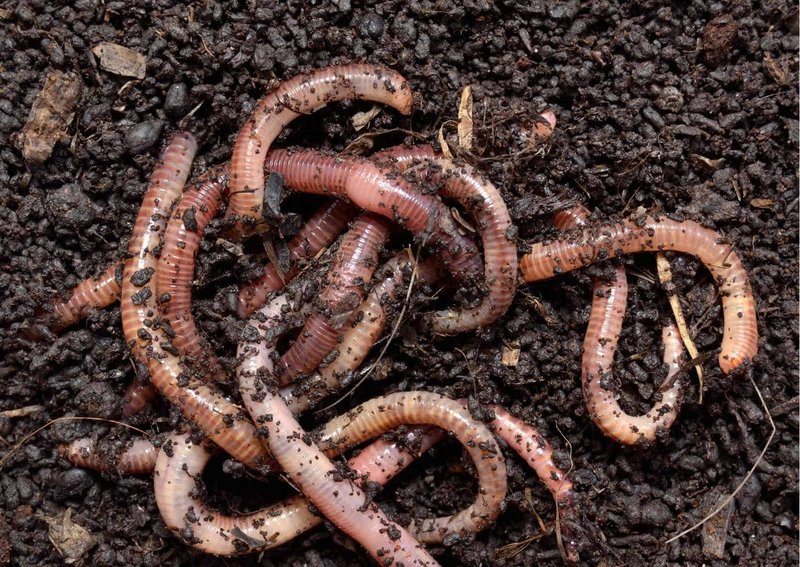
Picture this: it’s a lovely spring day, and the sun is shining. As the ground warms up after a long winter, earthworms start to stir, inching their way to the surface. They’re not just out for a joyride, though—they’re responding to temperature shifts that signal it’s time to find food, mate, or simply explore. So, how exactly does temperature affect these important soil dwellers? Let’s dig a little deeper and uncover the fascinating relationship between temperature and earthworm behavior.
Understanding Earthworms and Their Environment
Earthworms are often referred to as nature’s little recyclers. They play a crucial role in soil health by breaking down organic matter and improving soil structure. But they’re not just wandering aimlessly through the dirt. Their movements and activities are closely tied to the temperature of their surroundings. In cooler temperatures, earthworms tend to stay deeper in the soil, where it’s more stable and less prone to freezing. But as the ground warms, they emerge to explore.
You might wonder why temperature matters so much for these slimy creatures. Well, it’s because earthworms are ectothermic, meaning their body temperature changes with their environment. This affects their metabolism, movement speed, and overall activity levels. When the soil temperature is low, you’ll find them sluggish or hiding away, while warmer temperatures can invigorate them, prompting more active foraging and reproduction.
Ultimately, understanding earthworm behavior in relation to temperature helps us appreciate their vital role in maintaining healthy ecosystems. Without them, our soil would lack nutrients, and plant growth would suffer.
Temperature Ranges and Earthworm Activity
Earthworms thrive in a specific range of temperatures, typically between 60°F to 70°F (15°C to 21°C). Within this range, they become active and begin to seek out food, moisture, and mates. But what happens when the temperature swings outside that sweet spot?
When temperatures dip below 50°F (10°C), earthworms will burrow deeper into the soil, entering a sort of hibernation mode to conserve energy. They slow down significantly, which means they’re not actively feeding or reproducing. On the flip side, if the temperature exceeds 86°F (30°C), it can become too hot for earthworms to handle. They may move to cooler, moister areas—like deeper soil or shaded spots—to avoid dehydration.
It’s fascinating to think about how these little creatures have adapted to their environment, relying on temperature cues to guide their behavior. This sensitivity to temperature not only impacts their day-to-day life but also affects their survival and, ultimately, their contribution to the ecosystem.
The Impact of Seasonal Changes on Earthworms
As seasons change, earthworm behavior follows suit. In spring, as the soil warms up after winter, earthworms become more active. They start to emerge from their burrows, and this is when you’re most likely to see them on the surface, especially after a rain. It’s like they’re throwing a little party to celebrate the warmer weather and the abundance of food that comes with it!
In summer, especially during heat waves, you might notice fewer earthworms. They’ll either dig deeper into the soil to escape the heat or stay hidden in moist areas. This behavior helps them avoid overheating, but it also means they’re less visible and less active.
When fall rolls around, temperatures begin to drop again, and earthworms start to prepare for winter. They go back to their deeper burrows, slowing their activity to conserve energy. This seasonal rhythm is vital for their survival, and understanding it helps gardeners and farmers know when to expect earthworm activity for soil health.
Earthworm Reproduction and Temperature
Temperature doesn’t just influence how active earthworms are—it also plays a key role in their reproduction. Warmer temperatures generally encourage mating and the production of cocoons, which are essential for the continuation of their species. In ideal conditions, earthworms can mate year-round, but their activity peaks during those moderate temperatures of spring and early summer.
When temperatures drop, earthworms may delay reproduction until conditions improve. This is a smart survival strategy that ensures their offspring have the best chance at thriving. If they produced cocoons in cold conditions, the hatchlings might not survive the chill.
You might be surprised to learn that a single earthworm can produce several cocoons a year, each containing up to five baby worms! This incredible ability makes them highly effective at increasing their population when the environment is right.
Soil Temperature and Nutrient Availability
The temperature of the soil not only affects earthworm behavior but also impacts the nutrient content available to them. Warmer soil temperatures can enhance microbial activity, leading to an increase in organic matter decomposition. This, in turn, provides more food for earthworms. They rely on decaying leaves, plant matter, and other organic materials as their primary food sources.
However, if the soil gets too hot, it can deter earthworms. Extreme temperatures might kill off beneficial microbes, leading to a decrease in food availability. This interplay between temperature, soil health, and earthworm behavior demonstrates just how interconnected ecosystems are.
By understanding these relationships, we can take better care of our soil. Whether you’re a gardener or a farmer, knowing how temperature affects earthworm behavior can guide your practices—like when to plant or how to amend your soil.
In summary, temperature significantly impacts earthworm behavior at almost every level—from activity and reproduction to nutrient availability in the soil. These little creatures are more than just garden dwellers; they are essential players in maintaining healthy ecosystems. By understanding how temperature affects their lives, we can better appreciate their role in soil health and biodiversity.
So next time you spot an earthworm, take a moment to think about what it’s doing and why. Whether it’s out exploring after the rain or burrowing deep to escape the heat, those wriggly little beings are working hard for our planet. We can all do our part by promoting soil health and creating environments where earthworms can thrive.

